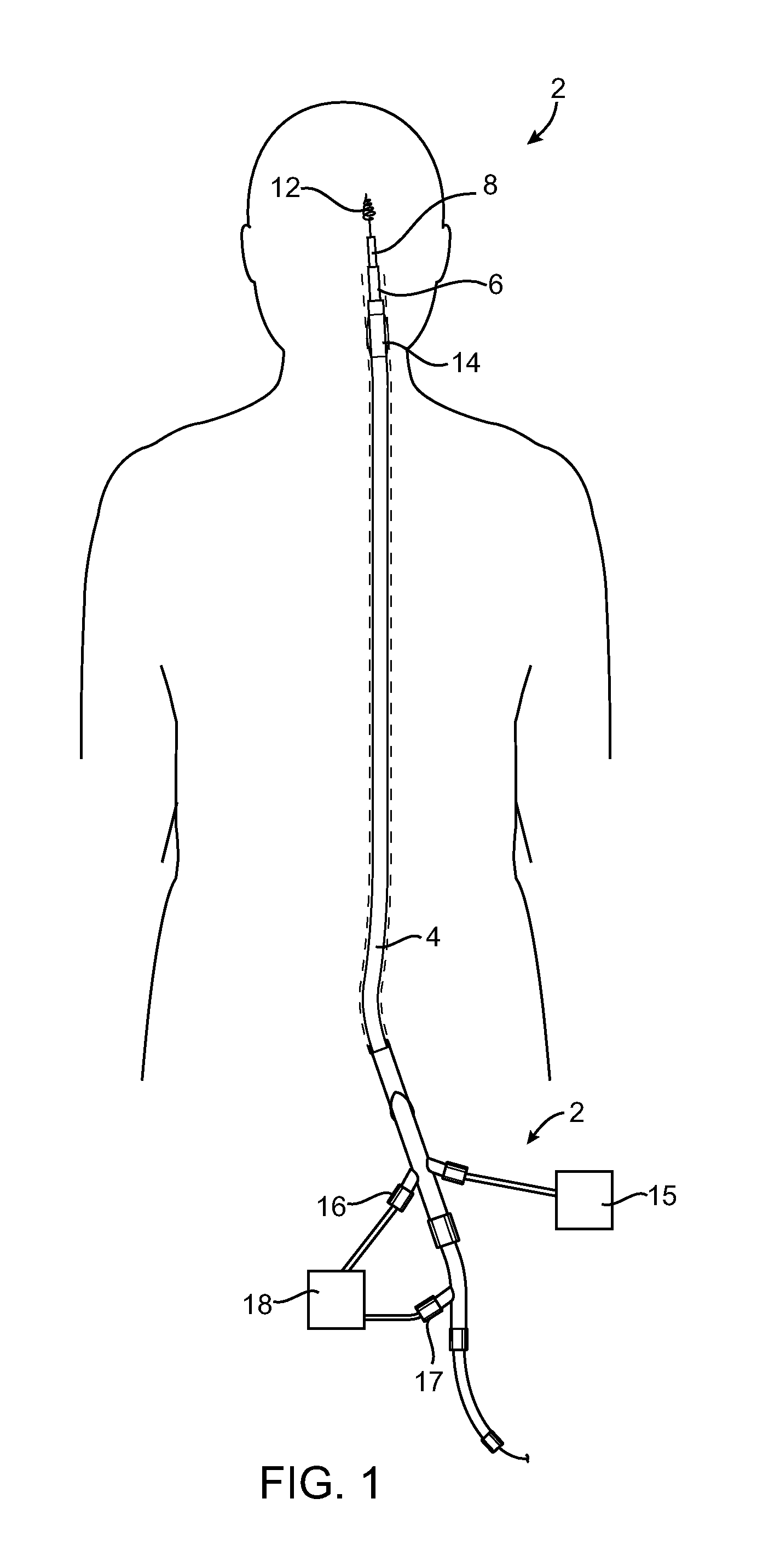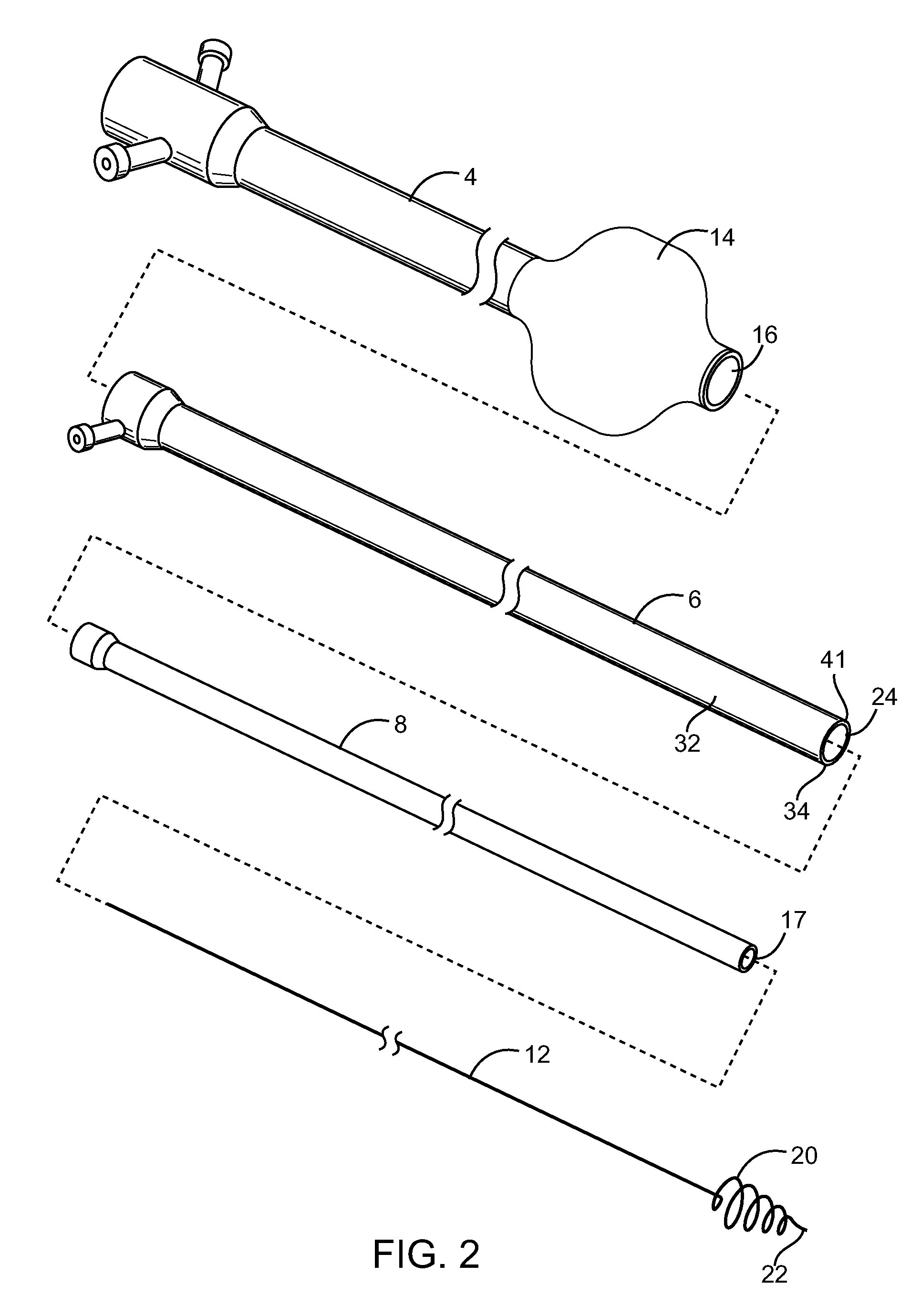Devices and methods for accessing a cerebral vessel
a technology for removing obstructions and cerebral vessels, applied in blood vessels, medical science, surgery, etc., can solve problems such as rigidity of typical guide catheters, and achieve the effect of optimizing advancement and support and more effective transmission of for
- Summary
- Abstract
- Description
- Claims
- Application Information
AI Technical Summary
Benefits of technology
Problems solved by technology
Method used
Image
Examples
Embodiment Construction
[0014]Referring to FIG. 1, a system 2 for removing an obstruction from a vascular location is shown. The system 2 is particularly useful for removing obstructions from the cerebral vasculature. The system 2 includes a guide catheter 4, a support catheter 6, a microcatheter 8, a guidewire and an obstruction retriever 12. The guide catheter 4 is advanced within the vasculature and guides the other catheters and devices through the larger vessels leading to the obstruction. The guide catheter 4 may have a balloon 14 which is coupled to a source of inflation fluid 15 and is inflated during the procedure to temporarily stop blood flow when removing the obstruction. The guide catheter 4 may have a lumen 16 and the support catheter 6 may have a lumen 17 which both may be coupled to a vacuum source 18 for aspirating the obstruction. Of course, the present invention may be practiced with one or more of the catheters without departing from various aspects of the invention. For example, the su...
PUM
 Login to View More
Login to View More Abstract
Description
Claims
Application Information
 Login to View More
Login to View More - R&D
- Intellectual Property
- Life Sciences
- Materials
- Tech Scout
- Unparalleled Data Quality
- Higher Quality Content
- 60% Fewer Hallucinations
Browse by: Latest US Patents, China's latest patents, Technical Efficacy Thesaurus, Application Domain, Technology Topic, Popular Technical Reports.
© 2025 PatSnap. All rights reserved.Legal|Privacy policy|Modern Slavery Act Transparency Statement|Sitemap|About US| Contact US: help@patsnap.com



